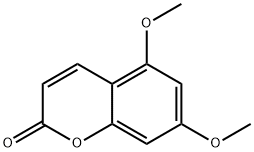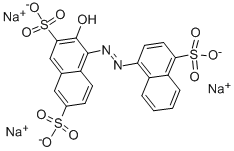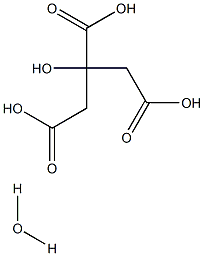Tartrazine
Synonym(s):Acid Yellow 23
- CAS NO.:1934-21-0
- Empirical Formula: C16H13N4NaO9S2
- Molecular Weight: 492.41
- MDL number: MFCD00148908
- EINECS: 217-699-5
- SAFETY DATA SHEET (SDS)
- Update Date: 2025-12-24 14:33:46

What is Tartrazine?
Description
Tartrazine is an anionic azo dye. It is mainly the trisodium salt of 4,5-dihydro-5-oxo-l-(4-sulfophenyl)-4-[4-sulfophenylazo]-lH-pyrazole-3-carboxylic acid. When dissolved in water the solution is a neutral golden yellow colour, and in acid it is also golden yellow. When dissolved in concentrated sulphuric acid, it produces an orange-yellow solution, which turns yellow when diluted with water. It is commonly used in desserts (e.g. dessert powders, puddings, custards, gelatine, ice cream), confectionery, preserves, beverages (including carbonated soda beverages and flavoured drink powders), cooked meats, and canned and frozen vegetables. It is also used in pharmaceuticals and cosmetics.
Chemical properties
Tartrazine is a colorant. It has good stability to changes in ph, showing no appreciable change at ph 3–8. It has excellent solubility in water with a solubility of 20 g in 100 ml at 25°c. It has good stability to light and heat, fair stability to oxidation, and shows no appreciable change in 10% sugar systems. It has a lemon-yellow hue and has good tinctorial strength.
The Uses of Tartrazine
Tartrazine is used as a dye for wool and silks; as colorant in food, drugs, and cosmetics. In biochemistry as an adsorption-elution indicator for chloride estimations. Tartrazine (otherwise known as E number E102, C.I. 19140, or FD&C Yellow 5) is a synthetic lemon yellow azo dye used as a food coloring. It has moderate compatibility with food components and is used in beverages, baked goods, pet foods, desserts, candy, confections, cereal, and ice cream. Tartrazine appears to cause the most allergic and intolerance reactions of all the azo dyes, particularly among as thmatics and those with an aspirin intolerance.
What are the applications of Application
Tartrazine can be used for:
(1) As a reference standard in testing food samples.
(2) As a substitute for Orange G in a variation of the Mallory trichrome stain.
(3) As a stain in a methyl violet-tartaric acid mixture for Cryptosporidium in faecal smears and mucosal scrapings.
Definition
ChEBI: An organic sodium salt which is the trisodium salt of tartrazine acid. A synthetic lemon yellow azo dye used as a food colouring.
Definition
tartrazine: A food additive (E102)that gives foods a yellow colour. Tartrazinecan cause a toxic response inthe immune system and is banned insome countries.
Preparation
Commonly known??Tartmzine ?. (a) 4-Aminobenzenesulfonic acid diazo, and 5-Oxo-1-(4-sulfophenyl)-4,5-dihydro-1H-pyrazole-3-carboxylic acid coupled; (b) 2 Moore 4-Aminobenzenesulfonic acid?and dioxide 5 diacid reaction
brand name
1 yellow 1409 yellow;A.f. yellow no.4;Acid leather yellow t;Acilan yellow gg;Airedale yellow t;Aizen tartrazine;Amacid yellow t-ex;Atul tatrazine;Ayellow t;Biovital;C.i. 19140;C.i. acid yellow 23;C.i. food yellow 4;Calcocid yellow mcg;Calcocid yellow xx;Cancert tartrazine;Certecol tartrazol yellow s;Cilefa yellow t;Curon;Dolkwal tartrazine;Edicol supra tartrazine n;Egg yellow a;Erio tartrazine;Eurocert tartrazine;Fast yellow 5g;Fd and c yellow no. 5;Fenazo yellow t 4;Food yellow no. 4;Galinid;Hd tartrazine supra;Hexacert yellow no 5;Hexacol tartrazine;Hispacid fast yellow t;Hydroxine yellow l;Japan yellow no. 4;Jaun tartrique;Kako tartrazine;Kayaku food colour yellow no. 4;Kayaku tartrazine;Kca foodcol tartrazine pf;Kca tartrazine pf;L yellow z 1020;Lemon yellow a geigy;Maple tartrazol yellow;Mitsui tartrazine;Naphtocard yelow o;Neklacid yellow t;Oxanal yellow t;San ei tartrazine;Sugai tartrazine;Tartar yellow fs;Tartar yellow n;Tartar yellow pf;Tartar yellow s;Tartran yellow;Tartrayellow;Tartrazine a export;Tartrazine b.p.c.;Tartrazine extra pure a;Tartrazine fq;Tartrazine g;Tartrazine lake yellow n;Tartrazine mcgl;Tartrazine ns;Tartrazine t;Tartrazine xx especially pure;Tartrazine xxx;Tartrazine yellow;Tartrazol bpc;Tartrine yellow o;Unitertracid yellow te;Usacert yellow no 5;Vondacid tartrazine;Xylene fast yellow gt;Yellow lake 69.
World Health Organization (WHO)
Tartrazine is widely used as a permitted colouring agent in food and pharmaceutical preparations. Its use has been associated with allergic reactions some of which have been severe. Several national drug regulatory authorities now require a warning on labels of products containing tartrazine and some manufacturers have voluntarily withdrawn this compound from their products.
General Description
Tartrazine is a synthetic azo dye, commonly found in drugs, food products and cosmetics. It can be synthesized by the reaction of sulfanilic acid with 3-carboxy-l-(4-sulfophenyl)-5-pyrazolone.
Hazard
An allergen.
Flammability and Explosibility
Non flammable
Safety Profile
Low toxicity by ingestion. Mutation data reported. When heated to decomposition it emits very toxic fumes of NOx, SOx, and Na2O.
Toxicology
This coloring agent is 5-hydroxy-1-p-sulfophenyl-4-(p-sulfophenylazo)- pyrazol-3-carboxylic acid, trisodium salt. It is a yellow powder and has been used as food coloring additive since 1916. Tartrazine is known as the least toxic coloring agent among synthetic coloring chemicals. The median acute oral lethal dose of tartrazine in mice is 12.17 g/kg. Beagle dogs received tartrazine as 2% of the diet for two years without adverse effects, with the possible exception of pyloric gastritis in one dog. Tumor incidence was unchanged relative to controls, in rats receiving tartrazine at 1.5% of the diet for 64 weeks, and in rats administered this dye at 5.0% of the diet for two years.
Human sensitivity to tartrazine has been reported with some frequency
and has been estimated to occur in 1/10,000 persons. Anaphylactic shock,
potentially life-threatening, has been reported but symptoms more commonly
cited are urticaria (hives), asthma, and purpura (blue or purple spots on the skin
or mucous membrane).
Properties and Applications
yellow. Soluble in water for yellow, slightly soluble in ethanol and soluble fiber. element, insoluble in other organic solvents. The strong sulfuric acid for yellow, yellow solution diluted; In nitric acid solution for yellow. Its water solution with hydrochloric acid discoloration; Add sodium hydroxide is red light deepened. Used for wool, silk, vinegar, polyamide fiber dyeing and printing directly. The Barium salt?also used for paper, leather, soap, drug, plastic, aluminium surface shading, can also be used in cosmetics and food coloring.
| Standard | Light Fastness | Soaping | Persperation Fastness | Oxygen bleaching | Fastness to seawater | |||
| Fading | Stain | Fading | Stain | Fading | Stain | |||
| ISO | 4 | 2 | 5 | 4-5 | 1 | 5 | 2 | 3 |
| AATCC | 4 | 2 | 2 | 3 | 1 | 1 | 3 | 3 |
Properties of Tartrazine
| Melting point: | 300 °C |
| Boiling point: | 909.54℃[at 101 325 Pa] |
| Density | 2.121[at 20℃] |
| vapor pressure | 0Pa at 25℃ |
| storage temp. | room temp |
| solubility | DMSO (Sparingly, Heated), Water (Slightly) |
| form | Powder |
| Colour Index | 19140 |
| color | Orange |
| Water Solubility | 260 g/L (30 ºC) |
| Sensitive | Hygroscopic |
| Merck | 14,9072 |
| BRN | 69850 |
| Stability: | Stable. Hygroscopic. Incompatible with strong oxidizing agents. |
| Biological Applications | Treating hepatitis,periodontal disease,psoriasis |
| EPA Substance Registry System | Tartrazine (1934-21-0) |
Safety information for Tartrazine
| Signal word | Danger |
| Pictogram(s) |
 Health Hazard GHS08 |
| GHS Hazard Statements |
H317:Sensitisation, Skin H334:Sensitisation, respiratory |
| Precautionary Statement Codes |
P261:Avoid breathing dust/fume/gas/mist/vapours/spray. P272:Contaminated work clothing should not be allowed out of the workplace. P280:Wear protective gloves/protective clothing/eye protection/face protection. P284:Wear respiratory protection. P304+P340:IF INHALED: Remove victim to fresh air and Keep at rest in a position comfortable for breathing. P501:Dispose of contents/container to..… |
Computed Descriptors for Tartrazine
Tartrazine manufacturer
New Products
4,4-Difluoropiperidine hydrochloride tert-butyl 9-methoxy-3-azaspiro[5.5]undecane-3-carboxylate Indole Methyl Resin N-Isopropylurea N,N-Dicyclohexylcarbodiimide(DCC) MELDRUMS ACID 5-METHYLISOXAZOLE-4-CARBOXYLIC ACID Magnessium Bis glycinate Zinc ascorbate 1-bromo-2-butyne 2-acetamidophenol 9(10H)-anthracenone Erythrosin B, 4-Piperidinopiperidine 2-((4-morpholinophenylamino) (methylthio) methylene) malononitrile 2,4-dihydroxybenzaldehyde 3-(4-morpholinophenylamino)-5-amino-1H-pyrazole-4-carbonitrile Methyl 2-methylquinoline-6-carboxylate 2,6-dichloro-4-nitropyridine 4-Bromo-2-chlorobenzonitrile 2-(benzylamino)acetic acid hydrochloride 4-(tert-Butoxycarbonylamino)but- 2-ynoic acid 3,4-dihydro-2H-benzo[b][1,4]dioxepine 1-Phenyl-1-cycloprppanecarboxylicacidRelated products of tetrahydrofuran








You may like
-
 ACid yellow 23 99%View Details
ACid yellow 23 99%View Details -
 ACid yellow 23 98%View Details
ACid yellow 23 98%View Details -
 Tartrazine CAS 1934-21-0View Details
Tartrazine CAS 1934-21-0View Details
1934-21-0 -
 Powder Lake Tartrazine Food ColourView Details
Powder Lake Tartrazine Food ColourView Details
1934-21-0 -
 Lake Tartrazine PowderView Details
Lake Tartrazine PowderView Details
1934-21-0 -
 Lakes Lake Tartrazine, For Food FlavoursView Details
Lakes Lake Tartrazine, For Food FlavoursView Details
12225-21-7 -
 Acid Yellow 23 - Tartarzine NS, PowderView Details
Acid Yellow 23 - Tartarzine NS, PowderView Details
1934-21-0 -
 TartrazineView Details
TartrazineView Details
1934-21-0
